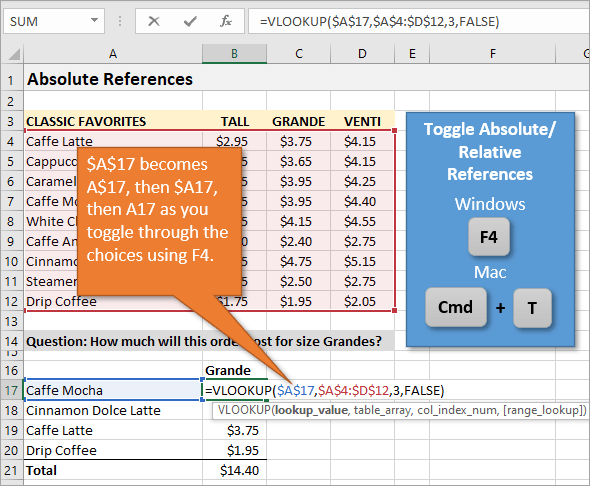
While that might work in limited situations, it’s not really practical. Microsoft says they ‘ strongly recommend using XLOOKUP in favor of VLOOKUP and HLOOKUP’. Both functions are so widely used they won’t be removed from Excel. Vlookup() and HLookup() aren’t disappearing from Excel. We’ve included the last two parameters in this example, even though they are the defaults.ġ – search from first to last down the list. Xlookup() doesn’t care where the matching column or row is. Vlookup() only returns values to the right of the lookup column. That might seem simple but anyone who knows VLookup() will tell you it’s not possible. =XLOOKUP(E2,Dwarves,Dwarves,0,1)ĭwarves – where to look for a matchĭwarves – the matching value to return. We’ll lookup a name from Col B and get the date beside it in Col A. Here’s an example of Xlookup() in action doing something that Vlookup could not. If not sorted, invalid results will be returned. 2 – Perform a binary search that relies on lookup_array being sorted in descending order.

1 – Perform a reverse search starting at the last item.Ģ – Perform a binary search that relies on lookup_array being sorted in ascending order.

search_modeġ – Perform a search starting at the first item. ~ (tilde) the ‘escape’ character if you need ?, *, or ~ as standard characters, not search terms. If none found, return the next larger item.Ģ – A wildcard match where *, ?, and ~ have special meaning. If none found, return the next smaller item.ġ – Exact match. The array or range to search return_arrayĠ – Exact match.
Vlookup in excel for mac full#
The full syntax of Xlookup() XLOOKUP(lookup_value, lookup_array, return_array,, ) lookup_value Excel smarties can try a binary sorted option – ascending or descending. Xlookup can find the next largest result or last occurrence both not possible with Vlookup/Hlookup.īetter searches – search ‘first to last’ or vice-versa. Matches can be exact, nearest lower, nearest higher or wildcard. Vlookup() defaults to a ‘near match’ which drove many people crazy.īetter Matching – a specific match mode parameter gives more control. Adding or deleting a column/row could mess up the entire function.Įxact matching – Xlookup defaults to an exact match which is what most people expect. Even worse, Vlookup/Hlookup work with relative positioning. If the result column was left (like the Date column above), it wasn’t possible without rearranging the table or considerable formula gymnastics. Vlookup() result must be from a column relative to the right of the lookup column. That might not seem like a big deal but anyone who has suffered with Vlookup/Hlookup will be singing hallelujahs. Specific column/row – Xlookup lets you choose a specific column/row to return.

Xlookup works to a specific column/row that’s left/right/above or below. Results from left or right – Vlookup() could only return results from columns to the right of the lookup column. Just select the lookup range and Xlookup will figure out the direction. Xlookup() is a simpler way to find a value by searching (lookup) a range or table with more options and less restrictions than Vlookup() or HLookup() Benefits of Xlookupīi-directional – vertical or horizontal lookups in the one function.

We’ll focus on Xlookup here, there’s also Xmatch() to improve upon Match(). It’s a big deal and worth an extensive look. Xlookup is now available to Insider releases Excel for Windows/Mac/Apple/Android. It’s a truly good and useful addition to Excel, some might call it a godsend. Vlookup() is getting a new, better and easier replacement Xlookup(). One of the most commonly used and confusing Excel functions is getting a major revamp.


 0 kommentar(er)
0 kommentar(er)
